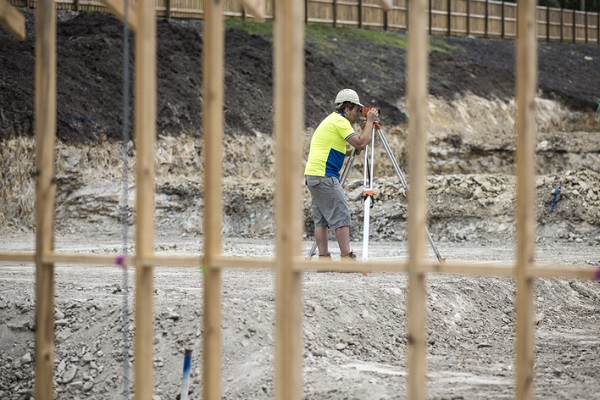Landmark case clarifies security of payment laws

An early 2023 court case has set a precedent for trade businesses around the Security of Payment Act. Sean Carroll finds out what’s going on.
The Supreme Court of New South Wales has handed down a judgement that conclusively answers the question of whether the Building and Construction Industry Security of Payment Act NSW 1999 (SOP) can be used on behalf of an entity that is insolvent.
On 1 November 2021, Richard Crookes Construction (RCC) engaged Kennedy Civil Contracting (KCC) to carry out civil, stormwater and associated construction works under two separate subcontracts. During the job, KCC served several payment claims under the SOP Act and while RCC responded to some, they failed to respond to others.
Fast forward to 1 August 2022 and KCC had appointed several voluntary and joint administrators who in the course of their investigations formed the view that the company was “hopelessly insolvent”. KCC owed creditors $5.5 million while having debtors of only $4.4 million.
KCC then commenced legal proceedings, seeking to recover monies owed by RCC. There was one key meeting where a vote was taken by creditors which decided that, instead of immediately entering liquidation, the company would execute a Holding Deed of Company Arrangement (Holding DOCA), a legal way of delaying the administration process, for the main purpose of pursuing RCC under the SOP Act.
The company acknowledged that KCC would inevitably be placed into liquidation in the future, but this Holding DOCA was entered just to “get around” Section 32B of the SOP Act.
For those who don’t have it in front of them, Section 32B reads: “A corporation in liquidation cannot serve a payment claim on a person under this Part or take action under this Part to enforce a payment claim (by making an application for adjudication of the claim) or an adjudication determination.”
The specialist insolvency and business recovery firm, Jirsch Sutherland engaged Chamberlains Law Firm to pursue the debts owed to KCC and proceedings commenced against Richard Crookes Construction Pty Limited under the SOP Act.
The ambiguity in the wording of Section 32B was as to whether it should be applied to construction companies that were insolvent or only to those who were formally in liquidation.
RCC argued that the Holding DOCA was entered into for an “improper purpose” (being entered into solely to avoid Section 32B) and believed that the court should override KCC’s creditors and terminate the DOCA, placing them right into liquidation.
Additionally, RCC and its legal team argued that entering the Holding DOA to avoid Section 32B was an abuse of process. This was the first reported challenge that tested the scope of Section 32B.
The court did not agree with RCC and held that the Holding DOCA was entered to maximise returns to creditors and as such was entered into for a proper purpose as KCC was simply organising its affairs carefully (but legally) to avoid the operation of section 32B.
Chamberlains Law Firm legal director, building and construction, Michael Terry-Whitall says that the benefits to the construction sector as a result of this decision will be significant.
“This sector faces abnormal cashflow pressure when compared to other industries. That position has become even more precarious in the current economic climate due to macroeconomic pressures affecting the supply chain, leading to significant increases in the price of materials,” he explains.
He adds that construction companies can have more confidence in pulling the trigger to appoint an administrator, knowing that doing so won’t mean a debtor can simply “shut the chequebook shut” and refuse to pay for work performed prior to the appointment.
“In essence, while the moratorium on enforcement by creditors while an entity is in administration has always operated as a ‘shield’, now the SOP Regime can be used as a ‘sword’.
“There are probably a lot of construction companies trying to decide whether to ‘trade out’ of a precarious solvency position or just pull the pin and appoint a liquidator. For all those entities they should probably now be considering implementing administration as part of their remedial business strategy.”
Adds Jirsch Sutherland partner Trent Devine: “According to the latest insolvency figures from ASIC, construction companies are the greatest casualties, which makes Court’s judgment even more relevant and timely.
“As a result, there’s a far greater chance of holding debtors to account to ensure a company is paid for the work they performed. This then has a flow-on benefit of maximising returns to creditors – increasing the prospects of a DOCA returning more to a creditor than if the company was simply wound up.”
This Supreme Court win will provide accountability if a company is about to get an invoice from an entity in administration. In turn, it will provide a better chance of recovery if owed money by an entity that enters into administration, plus it gives better prospects of a successful DOCA if a company needs to go that route.
One piece of advice Michael adds is to be very conscious of the entitlements/obligations under the SOP Act and to get ahead of cashflow difficulties by approaching an insolvency professional early (or a lawyer for Safe Harbour advice).
DISCLAIMER: This article is not legal advice and the views and comments are of a general nature only. This article is not to be relied upon as a substitute for detailed legal advice.
